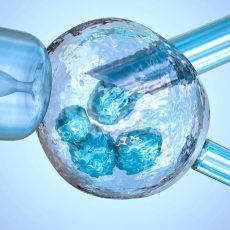You have probably wondered, “how long does IVF take?”. In this article, we will take a look at the process, from regulating the menstrual cycle to preparing the ovaries. You’ will also learn about the pre and post-surgery stages of the IVF process, including the need for sedation during the procedure.
Pre IVF Preparations
Ideally, couples wait at least six months before their appointment with the gynaecologist. During the previous three months, the follicles mature, which is crucial to the quality of the eggs produced. After that, you must avoid making any major changes to your diet, and limit the amount of physical activities. A healthy diet is essential for a successful IVF cycle.
It is important to learn as much as you can about the process of IVF, including the clinic you choose and the treatment program that will be used. Though IVF is a lengthy journey, being well prepared may minimize your anxiety and ensure success.
Preparing the Eggs for Fertilization
In IVF, preparation of eggs for fertilization is essential to the success of the procedure. The embryologist will examine the eggs to determine their maturity and then insert sperm into them using an intracytoplasmic syringe (ICSI). The embryos will then be placed int an incubator, similar to the one inside the body. Depending on their maturation status, these eggs will undergo IVF. The embryos will stay in the laboratory for 5 to 7 days, and may be transferred to the mother or father.
A doctor will use medication to make the eggs mature for fertilization. During this procedure, a small hole will be created in the embryo shell. The eggshell normally dissolves on its own. The egg must have a membrane in order to implant successfully. Assisted hatching has no proven benefits in improving pregnancy rates, and there are some minor risks involved. However, it is worth considering for those who have difficulty conceiving naturally.
Sedation During Procedure
The process of egg collection, or egg retrieval, is often performed under anesthesia. An ultrasound probe is used to identify follicles and a long needle is guided into them. The eggs are then removed via a suction device. The entire procedure usually takes about 15 minutes. Although the procedure itself is relatively painless, some women may experience slight cramps or vaginal bleeding during the procedure. These symptoms should dissipate by the time they are released.
The egg retrieval process typically takes about 15 minutes and requires little pain. A nurse will accompany the patient into the procedure room and have them lie on a surgical bed. The IVF Consultant, embryologist and anaesthesiologist will come to the room and introduce themselves. During the procedure, the anaesthesiologist will insert a cannula into the back of the patient’s hand. Then, sedation will begin. The procedure is not painful and requires no stitches or incisions.
 Embryo or Blastocyst Transfer
Embryo or Blastocyst Transfer
The process of transferring an embryo or a blastocyst in IVF can be very difficult, especially if you do not have a good sperm quality. The first step in the transfer process is the culture of the embryos. Normally, embryos will be cultured in G1.2 or G2.2 media. Embryos transferred on day three should be grown in G1.2 media for two to four days. In day five, however, embryos will be transferred in G2.2 medium. Embryos developed in the latter stage are more likely to implant successfully.
A few advantages of blastocyst transfers are listed below. Firstly, blastocysts have a higher chance of surviving. This means that fewer of them will not become a baby. Furthermore, this procedure allows for preimplantation genetic testing. Additionally, a blastocyst transfer is associated with improved pregnancy rates and reduced multiple gestation risk.
Possible Complications of IVF
IVF is a fertility treatment that has revolutionized the way infertile couples conceive. This procedure has helped countless couples have children and has changed their lives forever. However, there are several risks associated with IVF, including multiple births, OHSS, and multiple pregnancies. These risks can be reduced by changing treatment protocols. Some of the complications associated with IVF are listed below. To learn more about these risks, please consult with a fertility specialist.
The most common complication related to IVF is Ovarian Hyperstimulation Syndrome (OHSS), which is caused by the excessive stimulation of the ovaries. Women who undergo IVF treatment have a slightly higher risk of developing OHSS. OHSS can be mild, moderate, or severe, and the symptoms can range from a bloated feeling to painful abdominal cramps. Typically, OHSS resolves on its own, but in some cases, it can be serious.

 Embryo or Blastocyst Transfer
Embryo or Blastocyst Transfer

